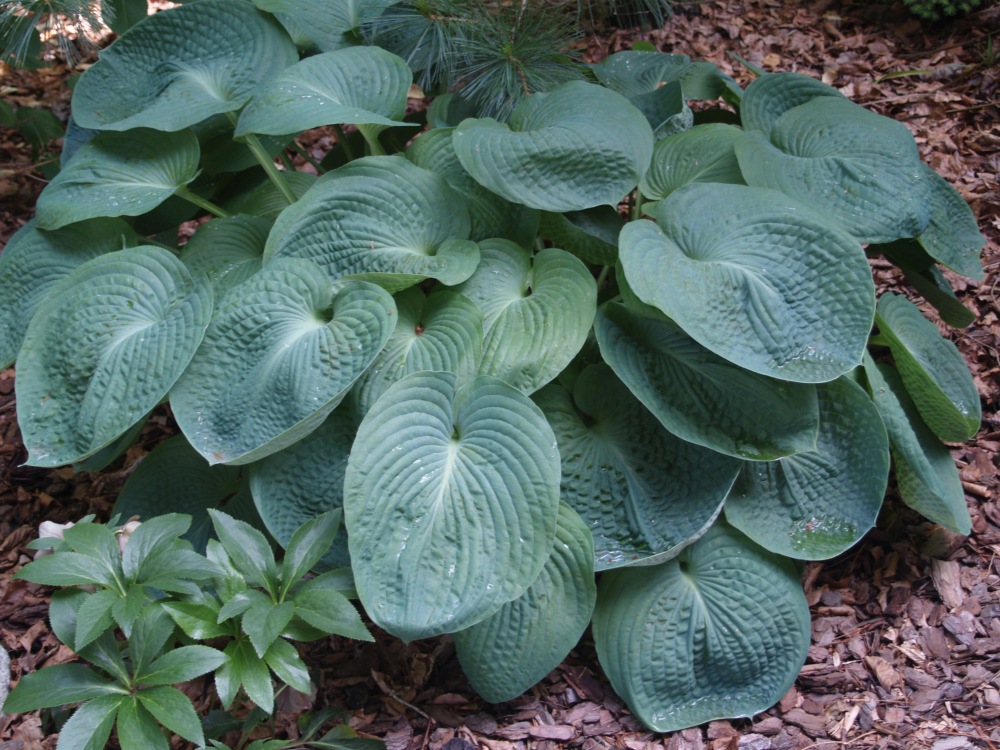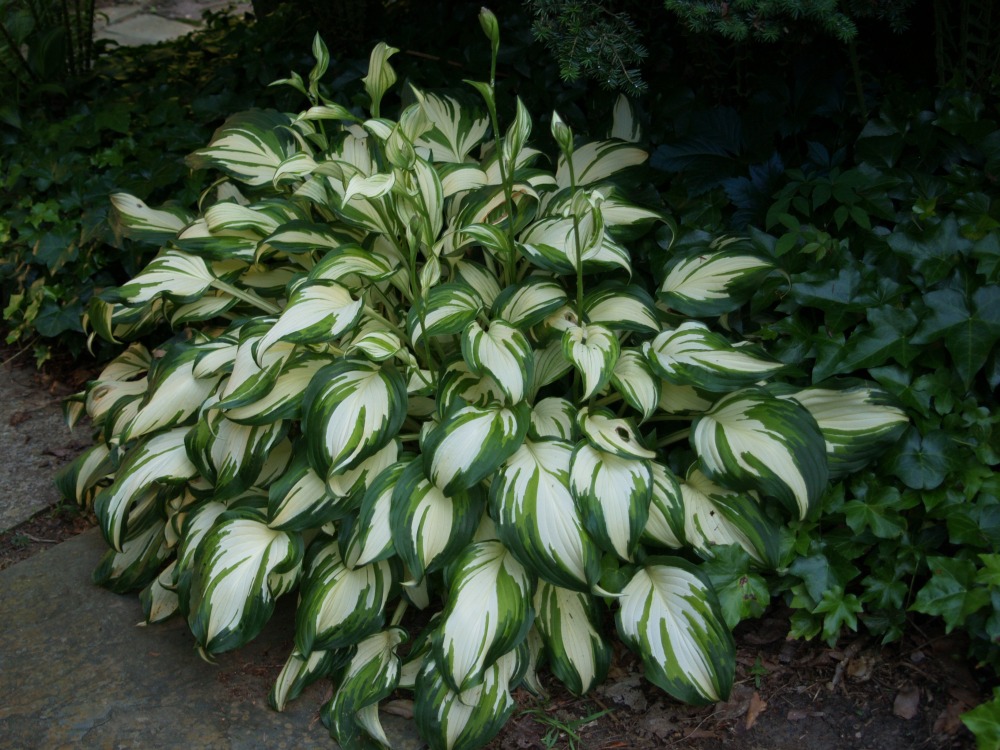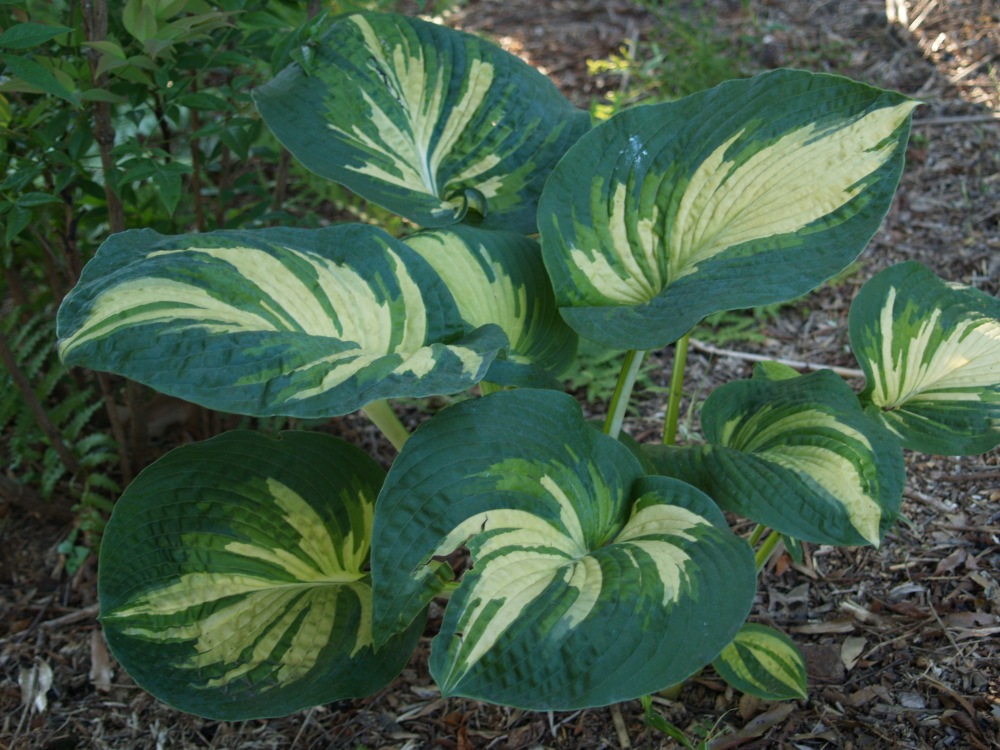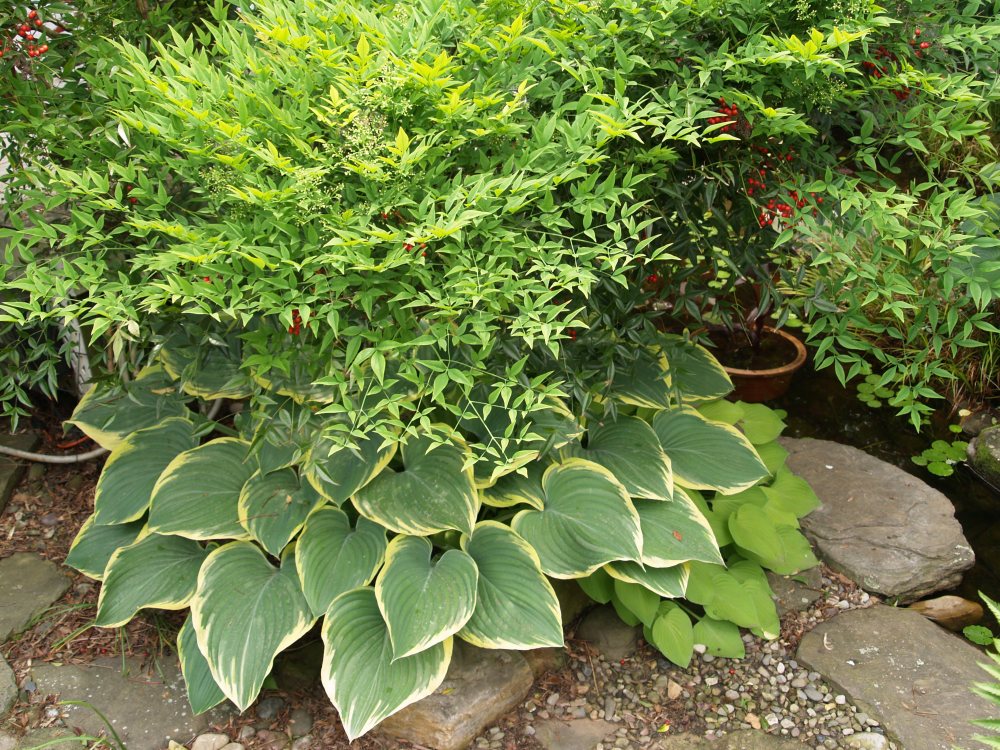At one time there were over a hundred varieties of hosta in the garden, but a few years of neglect when deer began to ravage the garden diminished the number by at least a third. A few varieties were lost to competition from the thirsty roots of maples and tulip poplars (though hostas will mostly tolerate the worst of dry shade), and a few treasures were lost when the new growth on a clump reverted to green (or blue) and I lazily failed to cut out the reversions.
In the garden there are small collections of dogwoods, magnolias, Japanese maples, and various other shrubs and trees. But, no assortment is as grand as the hostas, mostly because a single hosta is considerably less costly than a dogwood (unless the gardener is foolishly enticed to purchase the newest introductions from breeders). Since I’ve begun to protect the hostas with a deer repellent, many clumps that had faded badly have revived, and I now have faith (but little room) to add more.
Hostas come in an assortment of colors and sizes, and in the garden there are a few dwarfs, many big leafed hostas, and some in the middle. There are blues and yellows, green leafed types, and many with variegated foliage. A few are old timers that are long forgotten by today’s hosta brokers looking for the latest and greatest. I recall when the choices of hostas were quite limited, with the green ‘Royal Standard’, and variegated ‘Medio-variegata’ (Hosta undulata ‘Medio-variegata, below) being the two mostly widely distributed.
‘Medio-variegata’ has stable variegation, rarely sporting to green, and the clump that thrives beneath a dwarf hemlock is perfectly sited so that it does not stress and fade in the heat of summer as this type is prone to do. This hosta has not been divided (or touched) in twenty years with no ill effect, and with dark green ivy and the hemlock as a backdrop, the variegation stands out boldly along the flagstone path.
Another old timer was nearly lost a year ago, but fortunately I recognized that ‘Great Expectations’ (Hosta sieboldiana ‘Great Expectations’, above) was in danger of being overwhelmed by a neighboring holly just in time. The hosta was planted on the back side of the holly when the plants in this area were much smaller, and it had been years since it was visible without pushing through shrubs. I suppose the plan at the time was to eventually move it, but this was a simple task that I never got around to, until it was almost too late.
I didn’t expect much in the first year after it was transplanted to a new spot much more in the open, where two large hornbeams and a grove of bamboo were removed a year ago. Transplanted hostas usually take a year to adjust, with smaller leaves the first year, but ‘Great Expectations’ shows little sign of the move and I expect it will flourish with more space.
‘Medio-variegata’ has been supplanted by variegated hostas more tolerant of sun, and perhaps the same is true for ‘Great Expectations’ since it is rarely seen today in garden centers. But, these antique hostas seem more resistant to reversion than newer varieties, and an old time gardener takes pleasure recalling a time when these were new and fresh, and in high demand.
I believe that the Magnolia identified as frasieri in actuality a tripetala or umbrella. The leaf forms a V at the base. Fraseri leaf forms a W as does also the macrophylla or big leaf. I did enjoy your presentation. Thanks.
Walter M. Ligon [email protected].
Is there a variegated leaf hosta similar to the one above that has lots of very tiny red flowers in sequence on a long stem?
There are many hundreds of hostas, and more introduced every year, but I’m not familiar with any with red flowers.